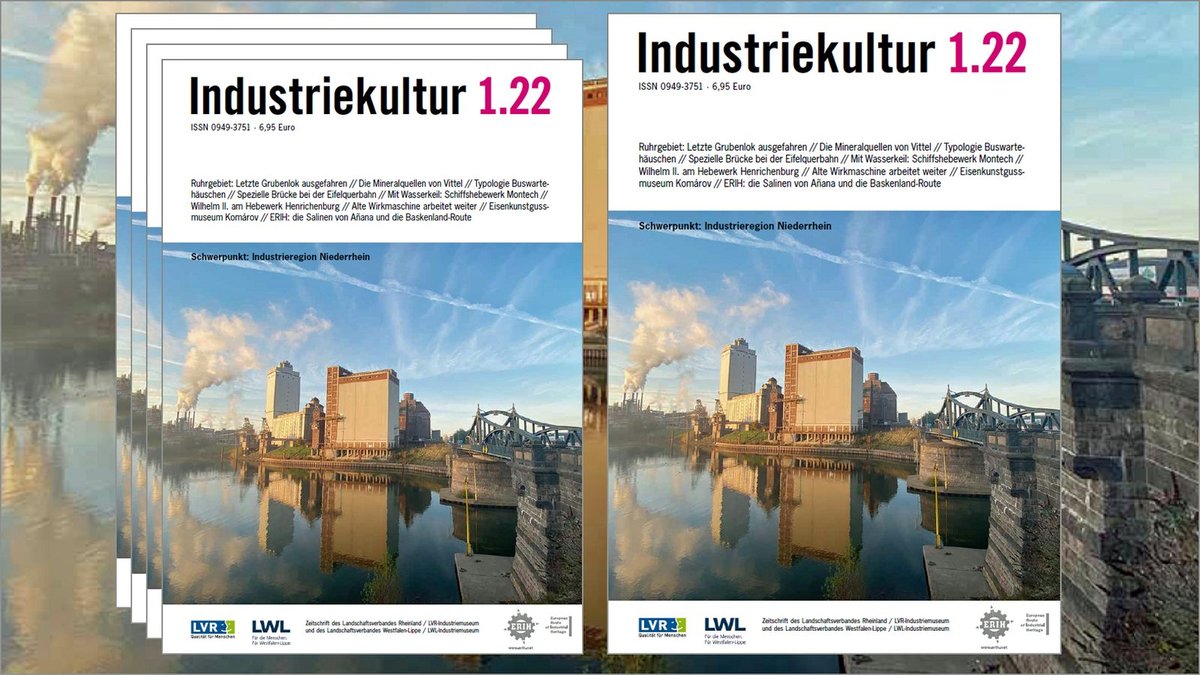
German magazine Industriekultur, No. 1.22: ERIH Regional Route Basque Country, Part 1
Travelling through the Basque Country by train or car reveals a diverse mountain landscape with a variety of small and medium-sized businesses nestled in narrow valleys. They have a fascinating industrial history, traced by the ERIH Regional Route Basque Country and differing from one Basque province - Álava, Bizkaia and Gipuzkoa - to the next. In its current issue, the German magazine Industriekultur introduces the first part of the regional route with a total of 18 ERIH sites in Álava and Bizkaia. The second part will be published in the next issue.
The Basque Autonomous Community, with its slightly more than 7,000 square kilometres equalling the size of the Rhine-Ruhr metropolitan region, is located at the transition of the Pyrenees into the Cantabrian Mountains and has more than 2.2 million inhabitants. Its prosperity owes much to industrialisation, which began in the 1840s with iron ore mining in the province of Bizkaia, thus transforming this sub-region into a European centre of heavy industry. A typical example is the blast furnace No. 1 of Altos Hornos de Vizcaya in Sestao, its setting on the fjord-like Ría de Bilbao being essential for the once significant trade relations with Great Britain, which supplied coal and imported Basque ore on a large scale.
The outstanding role of Bilbao's deep-water port for the Basque Country is illustrated by the Bilbao Maritime Museum and – further downstream in Getxo – by the Puente Colgante, the world's first transporter bridge. Getxo is also home to the mansions of wealthy tycoons, whose history is revealed by a relaxing audio guide tour. To understand the chronological range of Basque industrial development, visitors can match the El Pobal foundry in Muskiz, right in the heart of the Bizkaia mining zone and dating back to the 16th century, with the Dolomite Museum in Karrantza featuring an exhibition on dolomite mining as of the 1950s.
There are two ERIH Anchor Points on the Basque Country Regional Route that represent more peripheral industries in the region: the museum at the former textile factory La Encartada in Balsameda - once successfully producing the famous beret ("boina") - and the 7,000-year-old salt production of the Añana salt works in the province of Álava, which continues to be handcrafted to this day. As an ERIH Anchor Point, Añana Salt Valley presented on a separate page. Characteristic of Añana are the salt pans, which - supported by delicate-looking wooden constructions - rise in tiers up the steep hills of the narrow valley. The brine that feeds the pans via a four-kilometre system of hollowed, salt-encrusted pine trunks, contains 240 grams of salt per litre and is considered exceptionally pure, making it much sought-after. An initiative by the owners has saved the plant from decay - more than half of the pans are in operation again. Salt workshops offer visitors the chance to practice using the salt shovel and learn about salt harvesting.
In Álava, industrialisation only gained momentum in the first half of the 20th century, the focus being on the oil, chemical, automotive and electrical industries. Ever since, the capital Vitoria-Gasteiz has become one of the most important industrial hubs in the Basque Country.
ERIH Regional Route Basque Country
ERIH Anchor Point Añana Salt Valley
ERIH article in 'Industriekultur': "Alles andere als fad: Salz dank Sonne. Die Salinen von Añana"
ERIH article in 'Industriekultur': "Fortschritt zwischen Meer und Minen. Regionale Route Baskenland, Teil 1"

